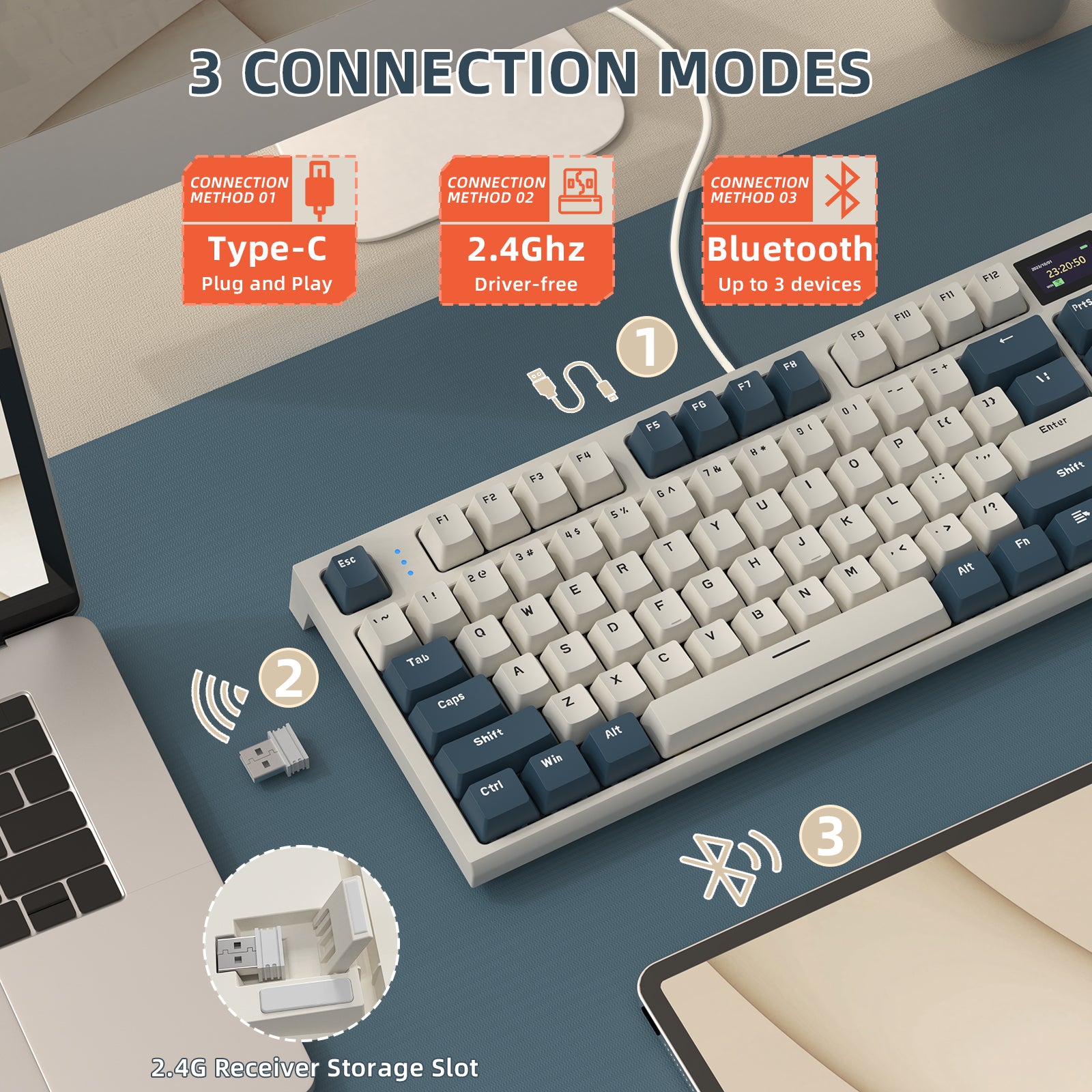Unlock the Secrets of Tactile-Feedback Keyboards: Why They Could Change Your Typing Game Forever!
Tactile-feedback keyboards have become increasingly popular among both casual users and dedicated typists, and for good reason. These keyboards provide a unique typing experience that sets them apart from traditional membrane keyboards and even some mechanical ones. The subtle yet noticeable feedback when a key is pressed not only aids in typing accuracy but also enhances the overall interaction with the device. As we delve deeper into the world of tactile-feedback keyboards, we'll explore their features, benefits, and how they work, ultimately demonstrating why they could be a game-changer for anyone looking to improve their typing experience.

What Are Tactile-Feedback Keyboards?
Tactile-feedback keyboards are designed to provide physical feedback to users when a key is pressed. This feedback comes in the form of a slight bump or resistance at the actuation point, which signals to the typist that the key has been successfully engaged. This is distinct from membrane keyboards, which often lack any tactile response, leaving users unsure if their keystroke has registered. The mechanics behind tactile feedback typically involve a switch mechanism that activates at a specific depth, allowing for a satisfying and efficient typing experience. This sensation can significantly enhance the typing experience, making it feel more natural and fluid, similar to writing with a pen on paper.
Features of Tactile-Feedback Keyboards
Key features of tactile-feedback keyboards include key travel distance, actuation points, and build quality. The key travel distance refers to how far a key must be pressed down before it activates. Tactile keyboards often have a moderate travel distance that balances comfort and speed. The actuation point is crucial as it determines when the keystroke is recognized, and tactile keyboards are designed to provide feedback right at this point, enhancing typing efficiency. Compared to membrane keyboards, which have a soft feel and often lack distinct feedback, and mechanical keyboards, which can be too loud or harsh, tactile-feedback keyboards strike a balance between responsiveness and a quieter typing experience. This makes them ideal for various environments, including shared workspaces.
Benefits of Using Tactile-Feedback Keyboards
The advantages of tactile-feedback keyboards are manifold. One of the most significant benefits is improved typing speed; the tactile feedback allows typists to know they’ve pressed a key without needing to bottom out, leading to faster typing. Another advantage is reduced typing fatigue. Many users, including my friend who is a prolific writer, have reported that the tactile feedback allows for a more relaxed hand position, leading to less strain during long typing sessions. Enhanced accuracy is another key benefit, as the feedback helps prevent accidental keystrokes. These benefits can cater to various user types: gamers appreciate the quick response time, writers enjoy the comfort during long writing sessions, and programmers find the precision invaluable for coding.
How Tactile-Feedback Keyboards Work
The technology behind tactile-feedback keyboards primarily involves the type of switches used. These switches are designed to provide a specific tactile response when pressed, typically through a mechanical or hybrid mechanism. Innovations in this area have led to various switch types that cater to different preferences and needs, such as those that provide a softer or firmer feedback. The importance of feedback in user experience cannot be overstated; it creates a more intuitive and satisfying interaction with the keyboard, encouraging users to type more frequently and for longer periods. Understanding how these mechanisms function allows users to appreciate the craftsmanship and engineering that goes into creating a tactile-feedback keyboard.
Choosing the Right Tactile-Feedback Keyboard
When selecting a tactile-feedback keyboard, several factors should be considered. Personal preferences play a critical role; some users may prefer a softer touch, while others might enjoy a firmer response. It's also essential to consider your typing style—whether you’re a light or heavy typist can influence your choice. Usage scenarios are important too; for instance, a quieter keyboard may be preferable in a shared office environment. I once tried several keyboards at a tech expo, and the difference in feel was remarkable. Testing different options before making a decision is crucial as it ensures you find a keyboard that truly complements your typing habits.
Enhancing Your Typing Experience with Tactile-Feedback Keyboards
In summary, tactile-feedback keyboards offer a transformative typing experience that can significantly enhance speed, accuracy, and comfort. Their unique features, combined with the technology behind them, make them an excellent choice for various users, including gamers, writers, and programmers alike. If you're looking to elevate your typing game, exploring and experiencing tactile-feedback keyboards for yourself could lead to a remarkable improvement in your overall typing experience.














